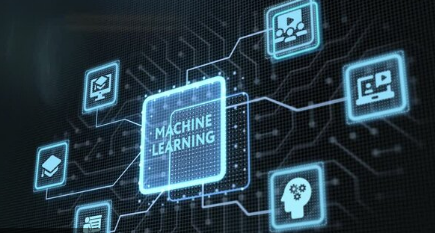In the rapidly evolving world of Natural Language Processing (NLP), machine learning models are unlocking new capabilities—from sentiment analysis to document summarization and chatbot design. But for every NLP project, one critical decision stands at the forefront: Should you use Zero-Shot or Few-Shot Learning?
The answer could impact not only the accuracy and speed of your results, but also the cost, scalability, and flexibility of your AI solution.
In this comprehensive guide, we’ll break down the key differences between zero-shot and few-shot learning, explore their strengths and weaknesses, and help you determine which approach is best for your NLP project.
Understanding the Basics
What is Zero-Shot Learning?
Zero-Shot Learning (ZSL) refers to a model’s ability to perform a task without having seen any explicit examples of that task during training. Instead, it leverages general knowledge and contextual understanding to make inferences about new, unseen tasks.
Example:
Ask a large language model to classify whether a review is positive or negative—without giving it labeled examples—and it still performs well by understanding natural language cues.
What is Few-Shot Learning?
Few-Shot Learning (FSL) involves giving the model a few labeled examples (typically 1–10) of a task so it can infer patterns and make predictions. It’s useful when annotated data is scarce, but some context or task-specific training is needed.
Example:
You provide 3 examples of labeled reviews (positive/negative) and then ask the model to classify a new one based on those examples.
Zero-Shot Learning: Pros, Cons, and Use Cases
✅ Advantages
- No training data required: Perfect for tasks where annotated examples are unavailable or costly to obtain.
- Highly scalable: Can adapt to many tasks on demand with simple prompt changes.
- Fast deployment: Ideal for prototyping or low-data environments.
❌ Limitations
- Lower accuracy on complex or domain-specific tasks.
- Heavily dependent on prompt engineering quality.
- May struggle with ambiguous instructions or uncommon categories.
Best Use Cases
- Text classification (e.g., spam vs. non-spam)
- Entity recognition in generic domains
- Language translation for common languages
- Basic summarization or question answering
- Rapid prototyping and testing of ideas
Few-Shot Learning: Pros, Cons, and Use Cases
✅ Advantages
- Higher accuracy than zero-shot in most real-world applications.
- Leverages domain-specific examples, improving performance in niche industries.
- Reduces need for large training datasets, making it cost-effective.
❌ Limitations
- Still needs curation of examples to work effectively.
- Can be sensitive to example quality and order.
- Less scalable when dealing with thousands of labels or dynamic tasks.
Best Use Cases
- Intent detection in custom voice/chat assistants
- Document classification in legal or medical NLP
- Sentiment analysis in specific domains (e.g., finance, healthcare)
- Few-shot question answering or text generation with tone control
- Fine-tuned tasks in vertical-specific applications
Head-to-Head Comparison: Zero-Shot vs Few-Shot Learning
| Feature/Criteria | Zero-Shot Learning | Few-Shot Learning |
|---|---|---|
| Data Requirement | None | Minimal (1–10 labeled examples) |
| Setup Time | Fast (prompt-only) | Moderate (need to select examples) |
| Accuracy | Lower for complex tasks | Higher, especially with good examples |
| Scalability | Excellent | Moderate |
| Domain Adaptability | Limited without examples | Strong with domain-specific input |
| Cost to Deploy | Low | Slightly higher (manual effort needed) |
| Learning Flexibility | General-purpose tasks | Tailored for custom tasks |
Prompt Engineering: The Secret Ingredient
Both approaches rely heavily on how you design your prompts, especially with transformer-based LLMs like GPT-4.5, Claude 3, or Gemini.
Zero-Shot Prompt Example:
“Classify the following customer feedback as Positive, Negative, or Neutral: ‘I love how fast the delivery was, but the packaging was poor.’”
Few-Shot Prompt Example:
_“Classify the sentiment of the following feedback:
- ‘Great quality and fast shipping.’ → Positive
- ‘Terrible customer service.’ → Negative
- ‘Item arrived. Nothing special.’ → Neutral
Now classify: ‘I love how fast the delivery was, but the packaging was poor.’ →”_
Choosing the right phrasing, examples, and task description can dramatically influence performance.
When to Choose Zero-Shot Learning
Use zero-shot learning if:
- You’re exploring or prototyping a new NLP feature quickly.
- You lack labeled data and need to test task feasibility.
- You’re working in a general domain with well-defined tasks.
- You want to run one-off predictions across multiple tasks.
When to Choose Few-Shot Learning
Use few-shot learning if:
- You have a small but representative set of high-quality labeled examples.
- Your task involves nuanced or domain-specific language.
- You want more reliable outputs with less ambiguity.
- You’re optimizing performance before fine-tuning or scaling.
Hybrid Approach: Start Zero, Scale Few
A smart strategy is to start with zero-shot learning to explore feasibility and get baseline results. Then, as your understanding grows or performance needs rise, move into few-shot learning for more precision.
Eventually, for critical applications, consider fine-tuning with larger datasets for full control and optimal accuracy.
Real-World Examples
E-commerce:
- Zero-Shot: Quick product tag classification (e.g., “sportswear,” “casual”).
- Few-Shot: Detecting return reasons from customer reviews using 5–10 labeled examples.
Healthcare:
- Zero-Shot: Identify medical conditions mentioned in patient notes.
- Few-Shot: Classify risk levels based on symptoms using past diagnosis examples.
Finance:
- Zero-Shot: News sentiment analysis for public stock headlines.
- Few-Shot: Fraud detection patterns from a handful of labeled transactions.
Conclusion: Align the Learning Style with Your Project Goals
There is no one-size-fits-all answer in the Zero-Shot vs Few-Shot debate. The choice should be driven by:
- Your data availability
- The complexity of your task
- Your accuracy expectations
- The speed and cost requirements of your project
In general:
- Choose zero-shot for flexibility, speed, and broad task coverage.
- Choose few-shot for more accuracy, control, and contextual adaptation.
As LLMs continue to advance in 2025 and beyond, expect both approaches to get better—and closer in performance. Understanding their trade-offs today puts you in the best position to build smarter NLP solutions tomorrow.
Also Read :
